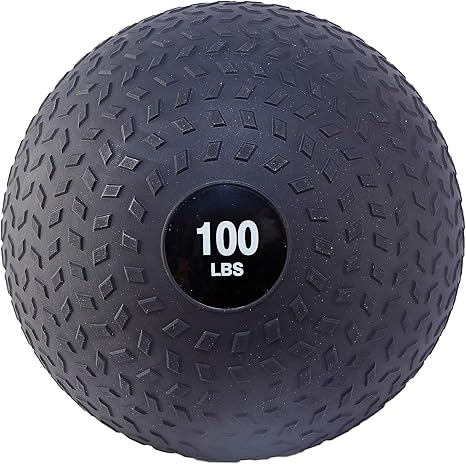Everything You Should Know About Medicine Ball and Its Benefits, Uses, and Techniques. Among all types of equipment ever used for building beautifying strength, coordination, and basic athletic performance, medicine balls are the most versatile. They come in quite a number of weights and sizes and are designed for a great deal of variation in exercises to make them suitable for every person-from novices to professional athletes. This article will speak about medicine balls, their history, benefits, uses, types, and techniques.
History of Medicine Balls:
The medicine ball has a long history, dating back thousands of years ago when Greek and Roman athletes alike utilized these weighted balls for strength conditioning and for injury rehabilitation. The very name “medicine ball” suggests that the ball was seen as a tool for helping to heal and to provide health, or if you will, a kind of physical therapy. In the twentieth century, medicine balls gained popularity within the United States, especially in athletic training and rehabilitation programs, which really cemented their reputation as one of the staples for fitness routines.

Benefits of Using:
Full-body workout: Medicine balls engages many muscle groups at a time; hence, one can have a complete workout. The exercises may involve core, arms, and legs, and even back, therefore being an eco-friendly coaching tool.
The other advantage is that the enhanced core strength comes from most of the remedy ball exercises which require stabilization hence increased core strength. Strong core is essential for normal body stability, balance, and posture.
Increased Power and Strength:
Medicine balls are also used in explosive movements that enhance muscular power and strength. These motions help athletes perform well in speed and agile-requiring sports.
Improved coordination and balance:
Most dynamic medicine ball exercises challenge stability and coordination and hence enhance the performance of the athlete in general performance.
Variation:
They have wide application to a variety of workout forms including, but not limited to, strength training, cardiovascular training, and flexibility exercises. They can be used either in personal training sessions, group classes, or physical therapy sessions.
Rehab Tool:
It find their regular application in rehabilitation procedures with the purpose of helping sufferers regain strength and mobility after injuries. They may be adjusted for distinctive weight ranges and workout routines to suit man or woman needs.
Types of Medicine Balls:
There are various types, each designed to fulfill precise coaching needs:
Standard:
Most of them are made from either rubber or vinyl and can be used for quite a fair number of exercises. Their weights mostly vary between 2 and 20 pounds.
Weighted Balls:
These are weighted balls used during strength training. These weighted balls have routine usage in exercises needing extra resistance.
Slamballs:
These are types of balls designed for high-intensity workouts, such as slams. They are usually heavier and contain the non-bouncing feature, making them suitable for dynamic exercises.
Wall Balls:
These are large balls that can be tossed upwards toward a wall. They are useful in many high-intensity workouts and functional training.
Bosu Balls:
The half-sphere stability trainers are not traditional medicine balls, but can be used with medicine balls for added balance challenges.
Exercises:
It can be used for a myriad of exercises. Following are some useful movements that involve them:
Squats:
Many of these squats have the medicine ball at the chest. This time, your legs are the primary mover but your core must be taut enough to keep you stable.
Russian Twists:
Sit on the floor with knees bent and lean your back slightly, holding the medicine ball. You will twist the torso from side to side for those obliques.
Slams:
Standing with the toes shoulder-width apart, raise the ball overhead and slam it into the ground. This is a really explosive movement-good for creating electricity and building strength.
Push-ups:
Execute push-ups with one hand on the medicine ball. It’s an exercise that includes the core and stability much more, really zeroing in on your chest and triceps.
Wall Ball Shots:
With the body facing a wall, stand a few feet away from it, holding the medicine ball at chest level; then squat down, before explosively throwing the ball against the wall. Catch it on the rebound and repeat.
Lunges:
Forward lunge with a Medicine Ball overhead for protection. This move will engage the legs and test balance.
Safety Precautions for Medicine Ball Work:
While medicine balls are generally safe, there’s some guidance to follow that will help prevent injury:
Choose the Right Weight:
If you’re a first-time user, it’s best to start off with lighter medicine balls in order to master the form, then go on to heavier weights.
Warm-Up:
Make sure you warm up before your workout. Dynamic stretches and light cardio can prepare your body for exercise.
Form:
Know the good form and proper alignment for each exercise. Engage core and avoid straining back.
Rest:
Make sure to have rest time between exercises to avoid injury caused by overuse.
Conclusion
Medicine balls help and complement the health level for anybody, whether just a beginner on his journey or goals. As a matter of fact, their versatility, effectiveness, and capacity to beautify strength, power, and coordination justify them as an essential thing in any workout routine. By incorporating medication balls into your training regimen, you will be able to gain holistic full-body exercise that contributes to your basic health and fitness goals.

